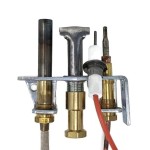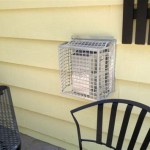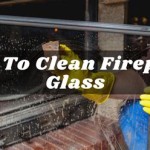```html
Converting To A Gas Fireplace: A Comprehensive Guide
Converting to a gas fireplace offers a blend of convenience, efficiency, and aesthetics that many homeowners find appealing. It eliminates the hassle associated with traditional wood-burning fireplaces, such as sourcing, storing, and cleaning up wood. While the initial investment can seem significant, the long-term benefits often outweigh the costs. This article provides a comprehensive guide to understanding the conversion process, factors to consider, and potential advantages.
The process of converting to a gas fireplace typically involves several steps. First, a professional assessment of the existing fireplace and chimney is crucial. This assessment identifies any structural issues, inspects the flue for proper ventilation, and determines the suitability of the existing infrastructure for gas conversion. The assessment also helps determine the appropriate size and type of gas fireplace insert or gas log set for the specific fireplace opening.
Following the assessment, a gas line needs to be installed or extended to the fireplace location. This is a critical step that must be performed by a qualified and licensed gas fitter. The gas line needs to be adequately sized to supply the required gas flow for the chosen fireplace model, and it must be installed according to all applicable local codes and regulations. Improper gas line installation can lead to dangerous leaks or insufficient gas pressure.
Once the gas line is in place, the chosen gas fireplace insert or gas log set can be installed. Gas fireplace inserts are typically self-contained units that are inserted into the existing fireplace opening. They offer higher efficiency and greater controllability compared to gas log sets. Gas log sets, on the other hand, are designed to mimic the appearance of a traditional wood fire, and they are placed directly into the firebox. The installation process usually involves connecting the gas line to the unit, ensuring proper venting, and testing the operation of the fireplace.
Key Point 1: Factors Influencing Conversion Costs
Several factors influence the overall cost of converting to a gas fireplace. The type of gas fireplace chosen (insert vs. log set) is a major determinant. Inserts generally cost more upfront due to their increased complexity and efficiency. The cost of gas line installation is another significant expense. The distance from the existing gas meter to the fireplace location, the complexity of the plumbing required, and any necessary permits all contribute to the gas line installation cost. Furthermore, chimney modifications or repairs, such as relining the flue or repairing masonry, can add to the overall expense. Labor costs will also vary depending on the contractor's rates and the complexity of the installation.
Permits are almost always required for gas fireplace conversions, and the cost of these permits needs to be factored into the budget. Local building codes dictate the specific requirements for gas appliance installations, and these requirements vary depending on the municipality. Failing to obtain the necessary permits can result in fines and delays.
The existing condition of the fireplace is also a factor. If the fireplace has structural damage, such as cracked firebricks or a deteriorating hearth, repairs will be necessary before the gas fireplace can be installed. These repairs can add significantly to the overall cost.
Key Point 2: Venting Options and Requirements
Proper venting is essential for the safe and efficient operation of a gas fireplace. There are several venting options available, each with its own advantages and limitations. Natural vent fireplaces use the existing chimney to exhaust combustion gases. These fireplaces require a fully functional and properly sized chimney flue. Direct vent fireplaces, on the other hand, vent directly to the outside through a wall or roof. They are sealed units that draw combustion air from outside, eliminating the need for a traditional chimney. Vent-free fireplaces do not require any venting and rely on catalytic converters to reduce emissions. However, vent-free fireplaces are subject to stricter regulations and may not be permitted in all jurisdictions due to concerns about indoor air quality.
The choice of venting option depends on several factors, including the existing fireplace configuration, local building codes, and personal preferences. Natural vent fireplaces are typically the least expensive to install, but they require a properly functioning chimney. Direct vent fireplaces offer greater flexibility in terms of installation location, but they typically cost more than natural vent fireplaces. Vent-free fireplaces are the easiest to install, but they may not be suitable for all homes or individuals.
It is crucial to ensure that the chosen venting system meets all applicable codes and regulations. Improper venting can lead to dangerous carbon monoxide buildup and other health hazards.
Key Point 3: Benefits of Converting to a Gas Fireplace
One of the primary benefits of converting to a gas fireplace is convenience. Gas fireplaces eliminate the need to source, store, and chop wood. They can be easily turned on and off with the flip of a switch or the press of a button, providing instant heat without the effort associated with building a traditional wood fire. This convenience makes gas fireplaces an attractive option for busy homeowners.
Gas fireplaces are also more efficient than traditional wood-burning fireplaces. They convert a higher percentage of fuel into heat, resulting in lower energy costs and reduced emissions. Gas fireplace inserts, in particular, are designed for maximum efficiency, and many models qualify for energy efficiency rebates. While log sets are not as efficient as inserts, they still provide a more efficient alternative to wood burning.
Another benefit of gas fireplaces is improved safety. Gas fireplaces eliminate the risk of flying sparks and embers associated with wood-burning fires. They also produce less creosote, reducing the risk of chimney fires. Furthermore, many gas fireplaces are equipped with safety features such as oxygen depletion sensors and automatic shut-off valves, providing added peace of mind.
Finally, gas fireplaces offer greater control over heat output. Most gas fireplaces have adjustable flame settings, allowing homeowners to customize the level of heat to their needs. This is especially beneficial for maintaining a comfortable temperature in the room without overheating. The cleanliness factor is also significantly improved, with no ash or soot to clean up after each use.
```Converting A Wood Burning Fireplace Into Gas Heat Glo

Wood To Gas Fireplace Conversion In Wisconsin Free Quote Badgerland Waesha
Can I Convert My Wood Burning Fireplace To Gas Woodlanddirect Com

Convert From Wood To Gas With A Insert The Kernel Burner

Wood Fireplaces Gas Conversion That Counts
Can I Convert My Wood Burning Fireplace To Gas Woodlanddirect Com

Wood Burner Conversion New Jersey Fireplaces Kjb

Can A Wood Burning Fireplace Be Converted To Gas The Flame Company

Convert To Gas Installing Fireplace Inserts Doctor Flue

Should You Convert Your Cabin Fireplace From Wood To Gas
Related Posts








